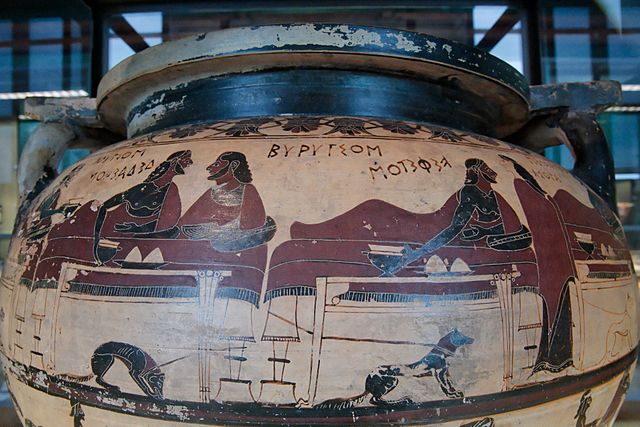In Greek mythology King Eurytus of Oechalia, Thessaly, was a skillful archer who even said to have instructed Heracles in his art of using the bow.
Image of King Eurytus of Oechalia in an Etruscan vase from Caere. Eurytus is depicted next to Heracles during a symposium. Krater of corinthian columns called Krater of Eurytus, circa 600 B.C.
Heracles, born Alcaeus or Alcides, was a divine hero in Greek mythology, the son of Zeus and Alcmene, and the foster son of Amphitryon. He was a descendant and half-brother of Perseus. He was the greatest of the Greek heroes, the ancestor of royal clans who claimed to be Heracleidae (Ἡρακλεῖδαι), and a champion of the Olympian order against chthonic monsters. In Rome and the modern West, he is known as Hercules, with whom the later Roman emperors, in particular Commodus and Maximian, often identified themselves. Details of his cult were adapted to Rome as well.
One of the most famous depictions of Heracles, Farnese Hercules, Roman marble statue on the basis of an original by Lysippos, 216 CE. National Archaeological Museum, Naples, Italy
Heracles carrying his son Hyllus looks at the centaur Nessus, who is about to carry Deianira across the river on his back. Antique fresco from Pompeii.
Greek mythology influenced the Etruscans. This vase at Caere shows King Eurytus of Oechalia and Heracles in a symposium. Krater of corinthian columns called 'Krater of Eurytion', c. 600 BCE
Heracles strangling snakes (detail from an Attic red-figured stamnos, c. 480–470 BCE)




